The Whiteboard is The Step Back’s daily basketball newsletter, covering the NBA, WNBA and more. Subscribe here to get it delivered to you via email each morning.
In yesterday’s installment of The Whiteboard, I began the annual exercise of examining the offensive style of each team using the same NBA offensive style charts I’ve been building for the past years. Today, we’re going to look at a few more teams with similar offensive styles but first, a brief recap of what these charts are and how to read them.
These charts are not meant to evaluate whether an offense is good or bad. They are designed to help illustrate how teams go about the goal of trying to put the ball in the basket. Each team’s offense is evaluated on four stylistic spectrums.
Ball movement is measured with the average touch time for each team, from the NBA’s player tracking statistics. A lower average touch time means the ball is moving from player to player more quickly.
Player movement is measured with a combination of different NBA.com tracking statistics and works out to average distance traveled per 24 seconds of offensive possession.
Pace is measured with the average length of an offensive possession from Inpredictable, a more accurate representation of how quickly a team is working than traditional pace.
Shot selection is measured with MoreyBall percentage — in this case the percentage of a team’s true shooting opportunities that came at the rim, from the free-throw line, or on a 3-pointer. It’s a generalized measure but captures something about how much each team hews to the shots that are, on average, the most efficient.
On the graphs below you’ll see a line for each team’s offense. As the line moves away from the center of the graph on each axis you’re seeing more of that stylistic trait. For example, shot selection shows a (hypothetically) more efficient shot selection the further you are from the center.
Here are a few other groupings of similar offensive styles we saw this season.
NBA offensive style: Run and spot-up
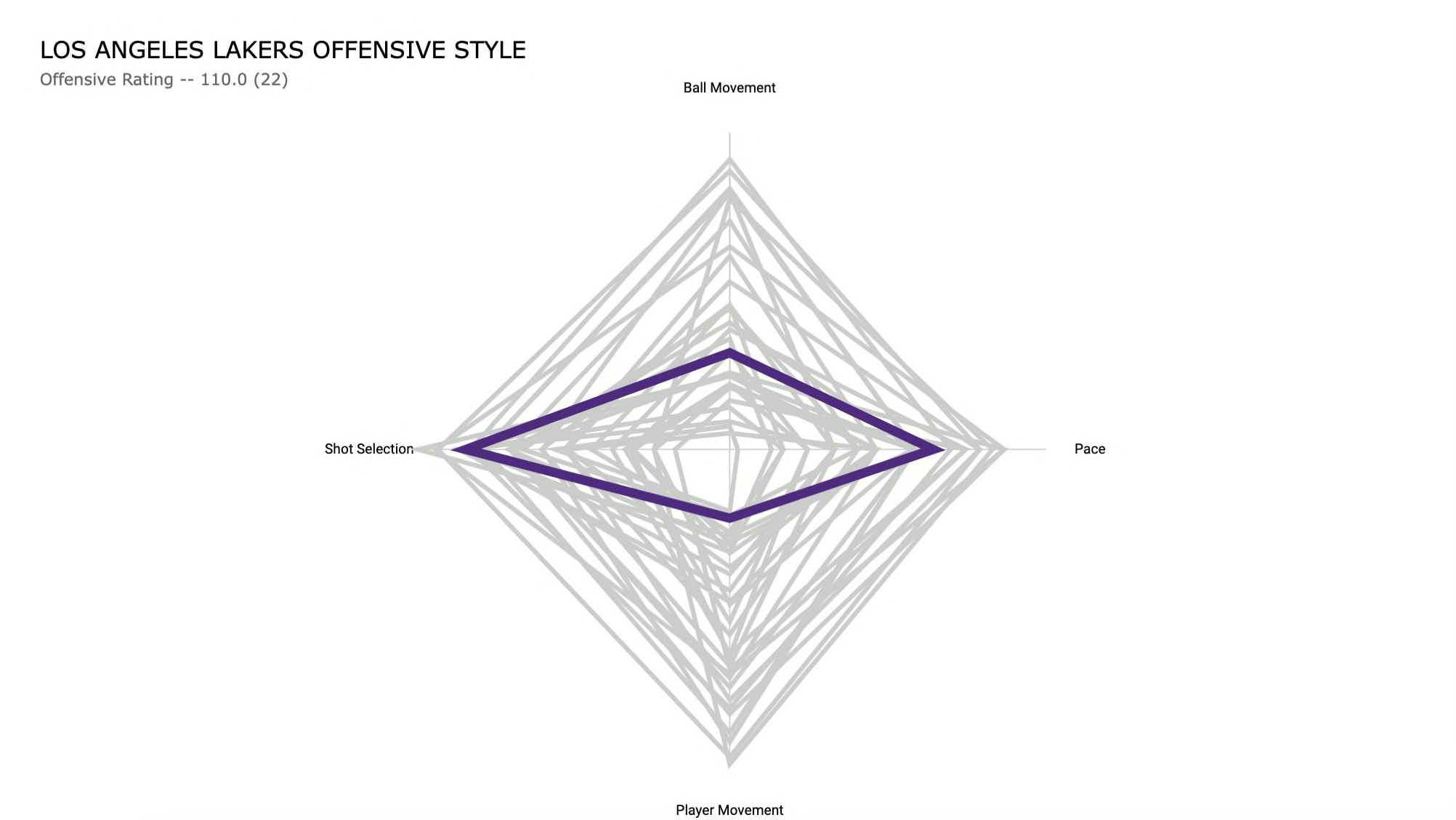
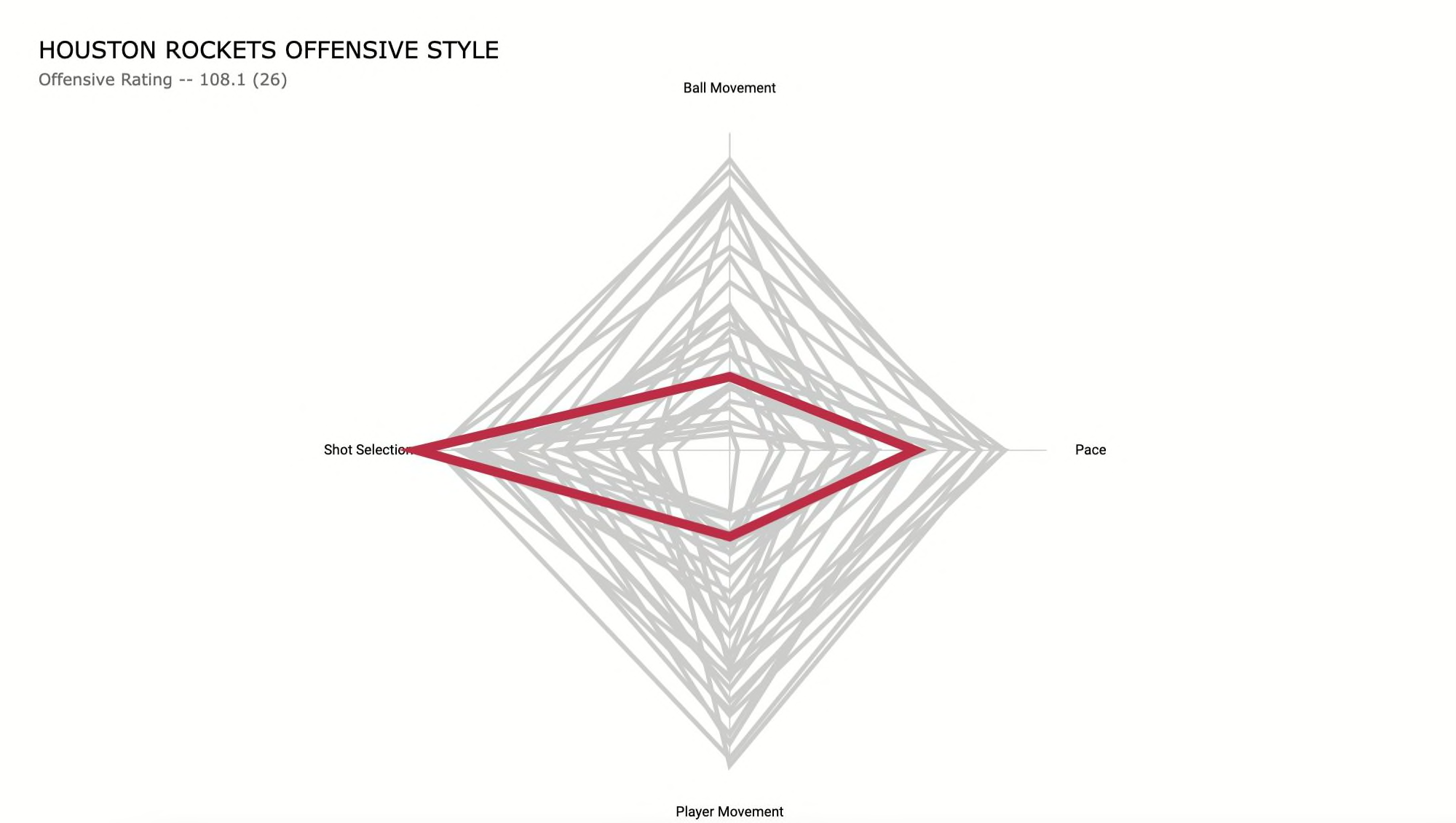
This style is categorized by an up-tempo attack and a fairly efficient shot selection with lots of 3-pointers. However, once the offense gets out of transition the halfcourt offense tends to be fairly static with a primary creator attacking the basket, surrounded by spot-up shooters. Both of these teams were in the same category last season but it might be wise to expect some evolution from the Rockets. If Alperen Sengun’s playmaking responsibilities increase, they have the foundation of a much more dynamic halfcourt offense that could benefit from a lot more movement. Or, they could all just stand around and watch Jalen Green work.
For the Lakers, this is about what you’d expect with LeBron and Westbrook as the primary playmakers. However, if you compare this year’s chart to last year’s you can see just how much the addition of Westbrook (and likely the injuries to Anthony Davis) limited their overall movement.
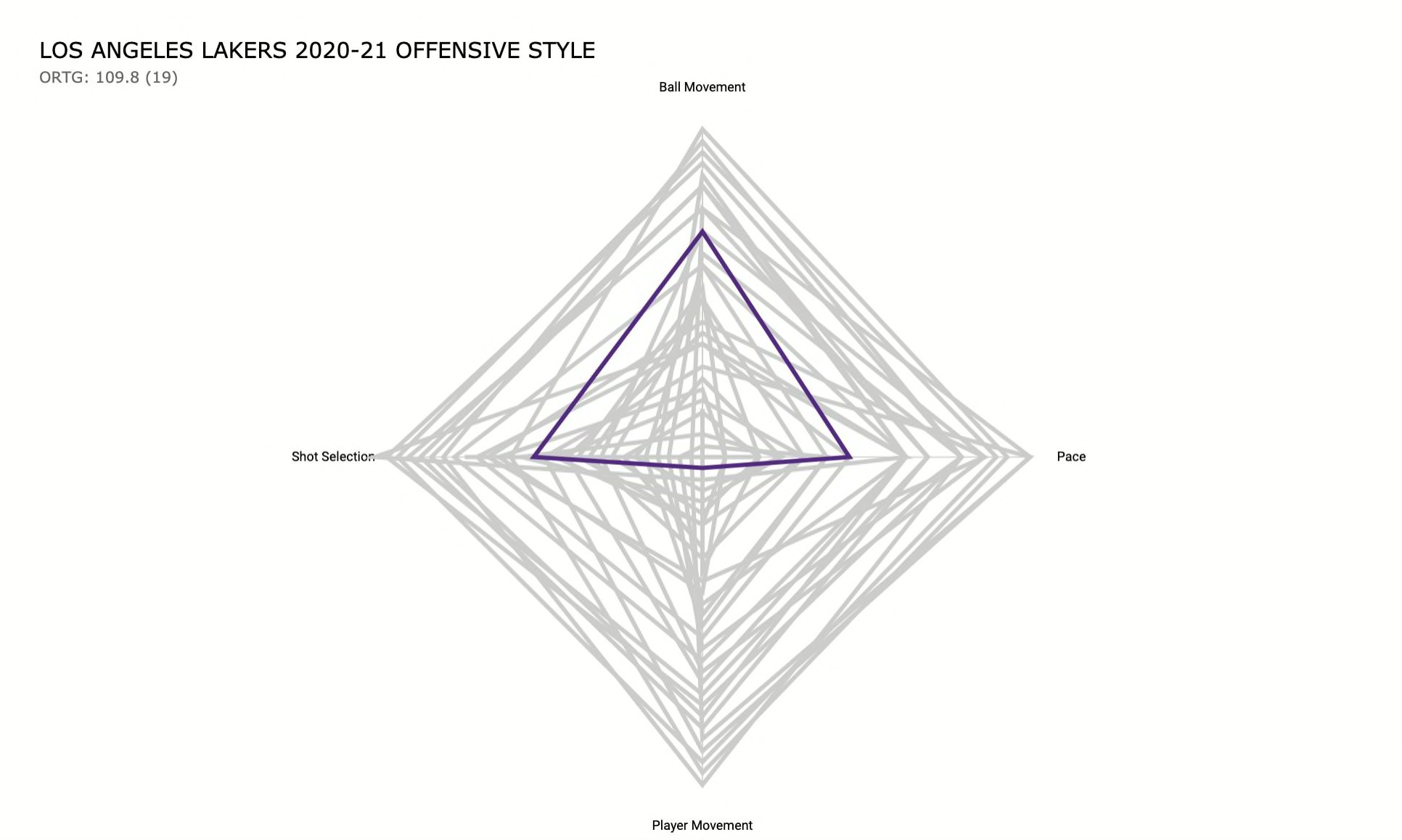
There wasn’t a lot of off-ball movement for the Lakers last season either but the ball seemed to move a lot more. With Westbrook presumably off the roster for next season, we could see some changes but as long as LeBron is here the offensive fundamentals are going to be pretty similar.
NBA offensive style: The (new) Warriors model

I first started building these style charts in the 2016-17 season, when the Warriors were are the height of their offensive powers. At that point, they were the prototype for the “A lot of everything” offensive style, that maximize shot selection, pushed the pace and used a ton of ball and player movement. Over the next few years, more and more teams began copying them but the addition of Kevin Durant pushed them into a zig as the rest of the league was chasing their initial zag.
What we saw from the Warriors in the Durant era was a lot like what we see here from the Spurs — a lot of movement, a fast tempo but a primary creator whose personal shot selection and comfort in the mid-range warped the entire team’s shot selection. Last season we saw five different offenses fall into this category — the Wizards, Grizzlies, 76ers, Suns and Kings. This year, it’s just the Spurs.
We’ll look at some of those other offenses and how they adapted this season in a later installment, but for the Spurs, this was largely about the emergence of Dejounte Murray. He led the team in shot attempts by a wide margin this season and 54.8 percent of his shot attempts were 2-pointers more than three feet from the basket. He was very effective shooting in those zones but it’s hard to make this kind of offense super-elite if you’re not using an outlier mid-range shooter like Kevin Durant or Chris Paul. Murray is good but he’s not at that level, yet.
NBA offensive style: It’s the shots stupid
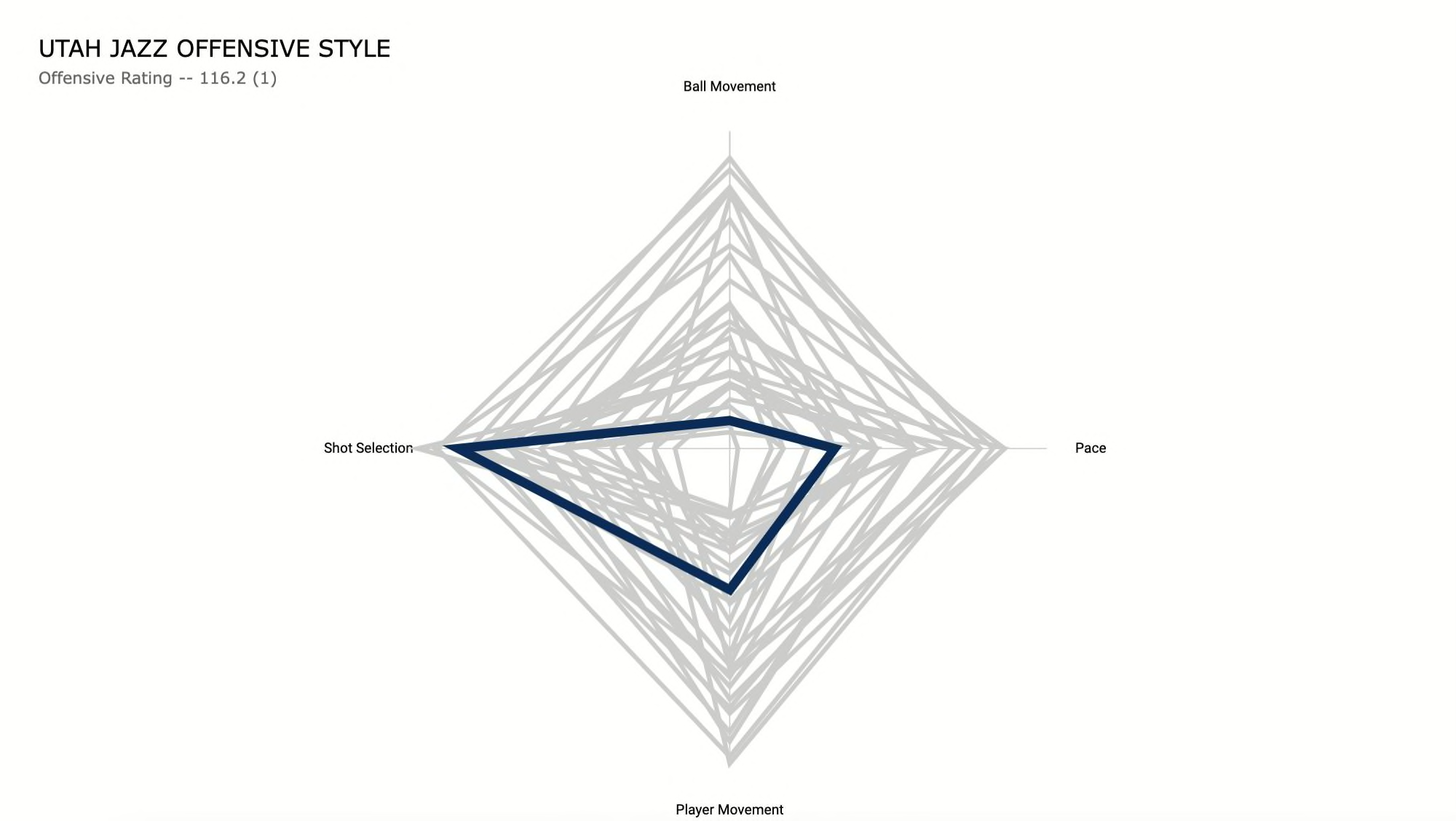
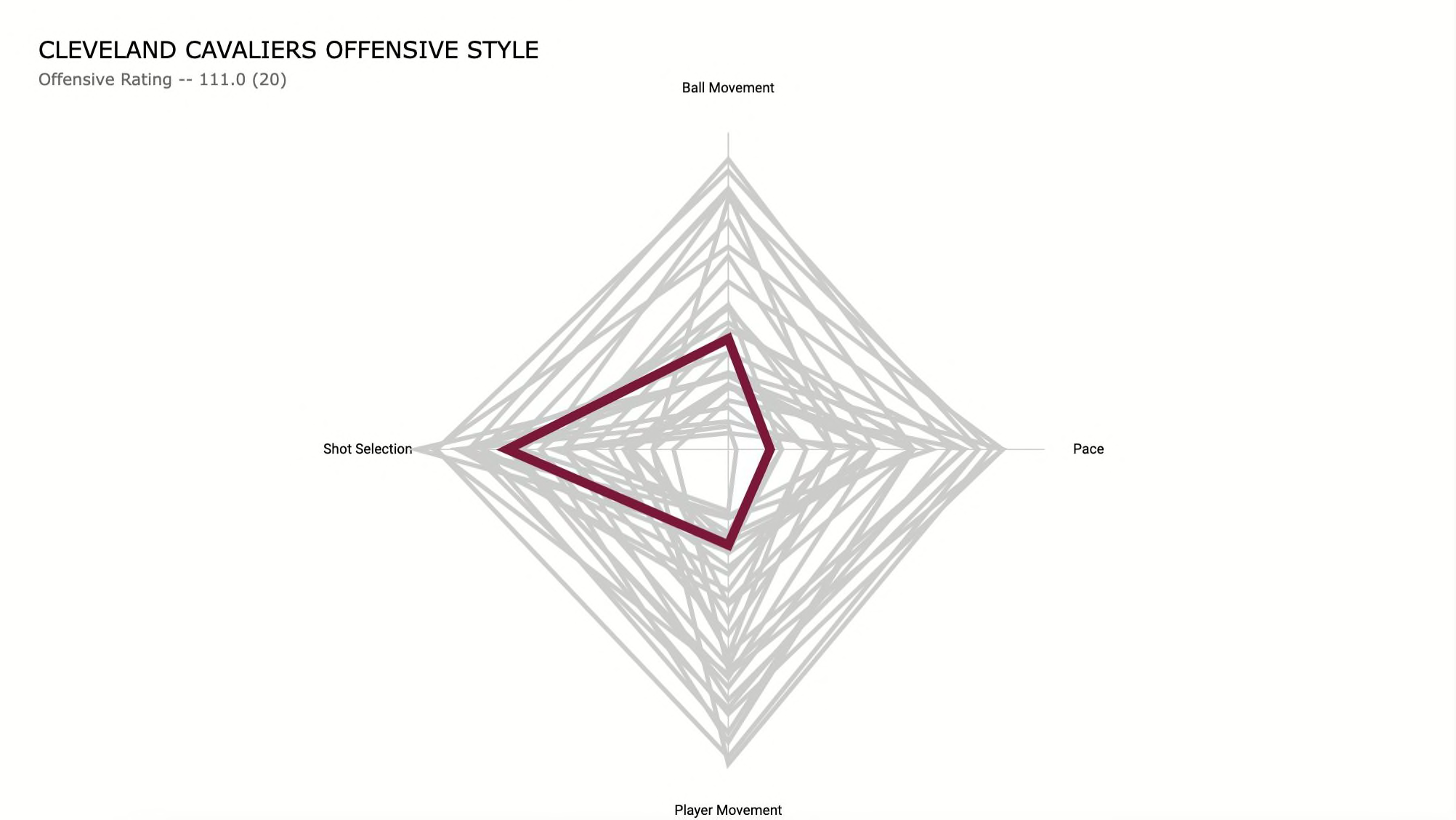
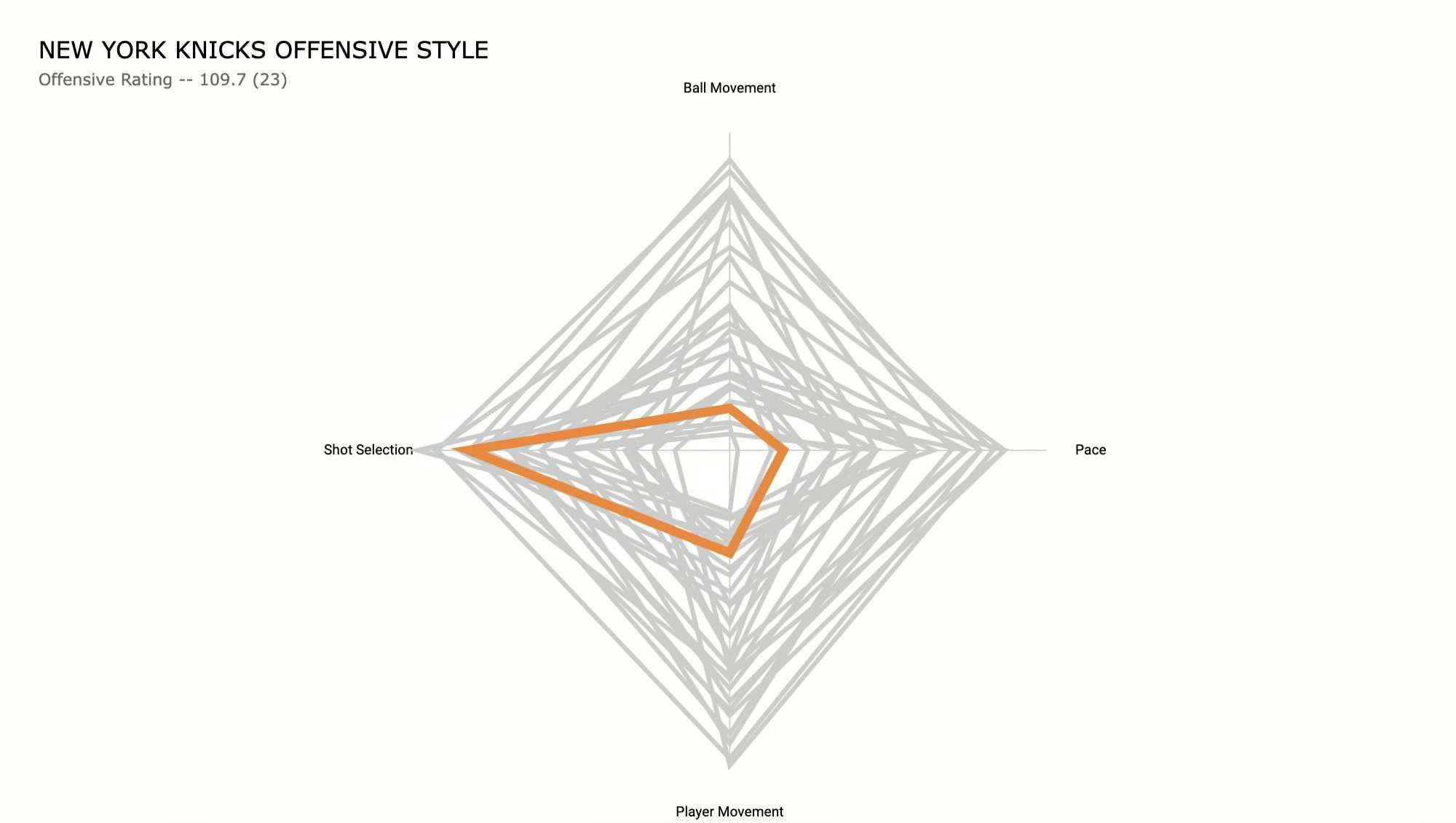
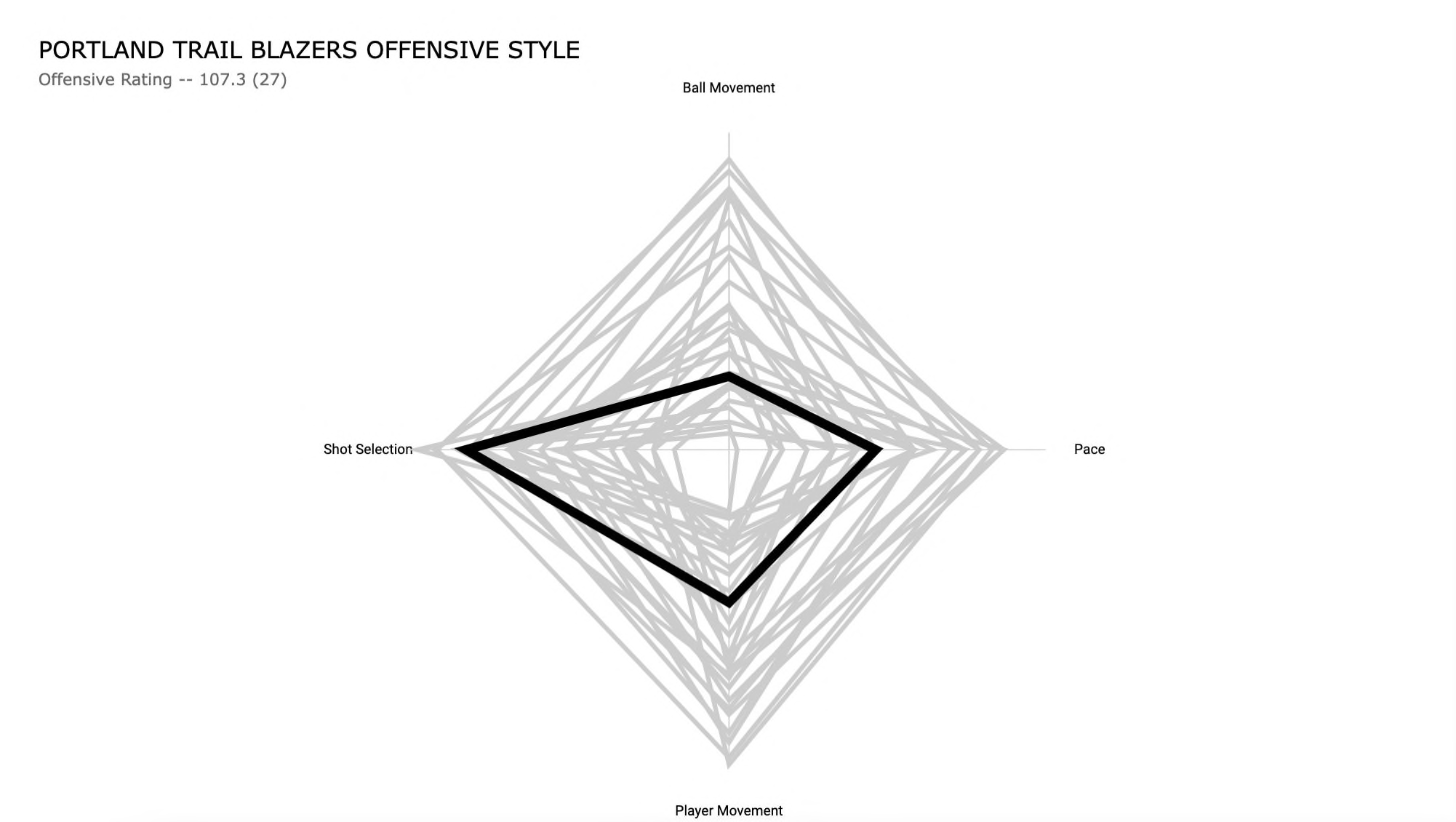
This last group of teams all rank in the 70th percentile or higher in shot selection but below the 50th percentile in all three other categories. These are teams who take lots of 3s, keep the pace under control and rely heavily on primary on-ball creators in the halfcourt. This group is also yet another reminder that efficiency is a combination of style and talent. In this group, we have the best offense in the league and three others that rank in the bottom third in efficiency.
On Monday we’ll take a look at a few more groupings. Make sure to subscribe to The Whiteboard so you don’t miss a thing.
Other NBA stories:
This week on The Long Two. After battling injuries all regular season, the Warriors are finally healthy and firing on all cylinders. Ben Ladner breaks down their new Death Lineup, plus — a worrying trend for the Utah Jazz.
Meanwhile, Jordan Poole has been the breakout star of the NBA Playoffs so far and he looks like just what the Golden State Warriors need to make another title run.
Jalen Green had a rookie season with some serious highs and some serious lows. What were the biggest takeaways and what does he need to work on for next season?
The Bucks losing in Game 2 was a major letdown but there were still plenty of reasons for Bucks’ fans to be optimistic.
The Brooklyn Nets really seemed to want the Boston Celtics. Zach Kram breaks down why the Celtics didn’t seem to fear the matchup at all.
James Harden is not the same player he was for the Houston Rockets. Whatever his ceiling is as a scorer at this point may be the playoff ceiling for the 76ers as a team.